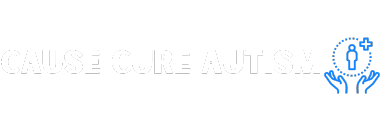Understanding and Managing Autism Symptoms
Parents of children on the autism spectrum have all experienced it. One moment your child appears to be fine, and the next, they tend to be going further into the characteristics that define where they fall on the spectrum. It always raises the question, “What makes autism worse?”
There are many factors that can exacerbate autism symptoms. Some of them may be environmental, while others may be sensory. Let’s look at some of the factors that can make autism worse.
1. Too much exposure to sensory experiences
Sensory experiences are some of the easiest ways to worsen autism symptoms. Sensory overload and hypersensitivity can make autism worse due to sensory sensitivities.
Lights can be too bright, and noises can be too loud. Taste, smell, and touch can also lead to a sensory experience that makes autism symptoms worse. Children can experience increased agitation and anxiety or choose to withdraw and become isolated.
2. Changes in routine
Children with autism tend to prefer routine over spontaneity. Any sudden changes can make autism worse, as they may have difficulty coping with the disruptions. Find ways to keep changes as familiar as possible while going through routine changes.
3. Social expectations and pressure
Social interactions can be troublesome for people with ASD. Social skills training programs can help improve these interactions and manage autism symptoms.
4. Social isolation
Social isolation can make autism symptoms worse. Joining events or making friends can be a challenge for individuals on the spectrum. Encourage connections through interests to combat social isolation.
5. Harsh discipline strategies
Harsh discipline can worsen autism symptoms as children may not understand the severity of punishments. Adjusting discipline strategies based on the situation can help children learn and avoid challenging behaviors.
6. Experiencing emotional stress
Many children with autism struggle with emotional regulation. Providing a supportive environment and using coping strategies can help reduce anxiety and address emotional stress.
7. Masking the symptoms
Individuals with autism may feel the need to mask their symptoms to fit in. This can lead to increased anxiety and depression. Encouragement and supportive environments can help individuals manage symptoms of masking.
8. Suppressing stimming behavior
Stimming is often used by individuals with autism to calm themselves. Suppressing stimming can worsen autism symptoms and lead to behavioral difficulties. Providing sensory input and stress management tools can help reduce stimming behavior.
Knowing what makes autism worse makes a huge difference
Recognizing and understanding what may worsen autism symptoms can help individuals with autism avoid triggers and cope with challenging situations. Seek advice from healthcare professionals to better support your loved one on the spectrum.
FAQs
Q: What do individuals with autism need?
A: While individuals with autism may have specific needs, three universal needs for anyone on the spectrum are safety, acceptance, and a sense of support.
Q: Does autism get worse with age?
A: According to research, autism itself does not get worse with age. However, certain symptoms may become more challenging as individuals with autism grow older.
Q: Does autism improve with age?
A: Much like getting worse, autism spectrum disorder does not improve with age. However, symptoms can improve over time through therapies and support.
Q: What things overwhelm autistic people?
A: Sensory overload and sensory processing issues can lead to individuals with autism feeling overwhelmed. This often leads to anxiety and meltdowns.
References:
Sofie Boterberg, Tony Charman, Peter B. Marschik, Sven Bölte, Herbert Roeyers, Regression in autism spectrum disorder: A critical overview of retrospective findings and recommendations for future research, Neuroscience & Biobehavioral Reviews, Volume 102
Waizbard-Bartov, E., Ferrer, E., Heath, B., Rogers, S. J., Nordahl, C. W., Solomon, M., & Amaral, D. G. (2022). Identifying autism symptom severity trajectories across childhood. Autism Research, 15(4), 687–701
Waizbard-Bartov, E., Ferrer, E., Young, G.S. et al. Trajectories of Autism Symptom Severity Change During Early Childhood. J Autism Dev Disord 51, 227–242 (2021)

